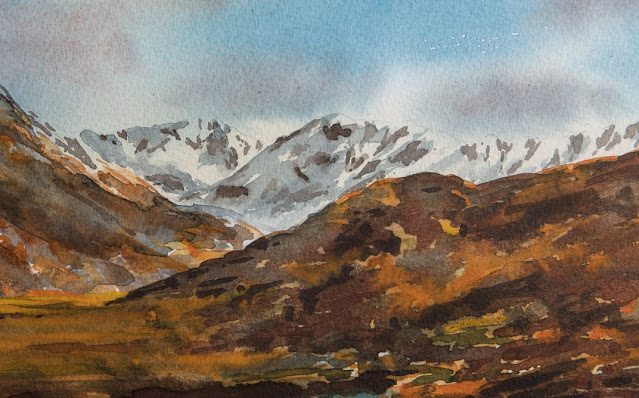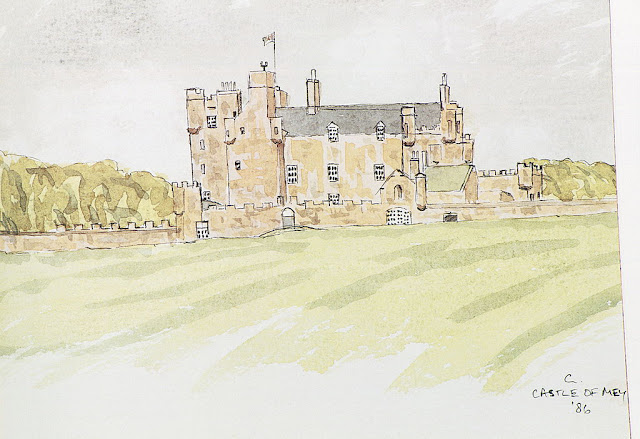Monday, January 31, 2022
SITESEEING
Selected items from various sites.
50 Things You Probably Never Knew Existed
From Bored Panda
In turn reprinting items from the website:
Yup That Exists
-----oOo-----
Sentient beings are forms of life that are aware of one's own existence, unlike, for instance, cooking clams live.
From:
Colossal
at:
Archaeologists Unearth a Roman Glass Bowl Dating Back 2,000 Years in Pristine Condition
Sitting a few miles from the German border, Nijmegen is the oldest city in The Netherlands, and after a recent archaeological dig, it’s also the site that unearthed a stunningly preserved bowl made of blue glass. The pristine finding, which is estimated to be about 2,000 years old, is from the agricultural Bataven settlement that once populated the region. Featuring diagonal ridges, the translucent vessel was made by pouring molten glass into a mold, sculpting the stripes while the material was liquid, and using metal oxide to produce the vibrant blue. Archaeologists uncovered it without a single chip or crack.Around the time the bowl was procured, Nijmegen was an early Roman military camp and later, the first to be named a municipium, or Roman city. Archaeologist Pepjin van de Geer, who led the excavation, told the De Stentor that while it’s possible the vessel was created in a German glass workshop in cities like Cologne or Xanten, it’s also likely that the Batavians traded cattle hides to procure it. In addition to the piece, van de Geer’s team has also uncovered human bones, pitchers, cups, and other precious goods like jewellery, which indicates the site was once a burial ground.
__________
From:
Smithsonian Magazine
at:
See Prince Charles’ Watercolours of Landscapes Around the World
A new show in London features 79 watercolours by the British royalThe largest-ever exhibition of paintings by Prince Charles, heir to the British throne, is currently on display in London. On view at the Garrison Chapel in the former Chelsea Barracks through February 14, it features 79 watercolours of landscapes in England, Scotland, France, Tanzania and more. The Prince’s Foundation, an educational charity established by Charles in 1986, organized the showcase, which is described in a statement as the first “full exhibition” of his artwork. Charles previously displayed 50 of his watercolours at Hampton Court Palace in 1998 and 30 at the National Gallery of Australia in 2018.
Some of his watercolours:
Huna Mill in Scotland
A landscape by Prince Charles of Haughs in Glen Callater of Scotland.
S’more:
View in South of France
Castle at Mey
Bodrum Castle, Turkey
Cottage at Balmoral Estate
No, this one isn’t by Charles, it is a watercolour by Adolf Hitler, The Courtyard of the Old Residency” in Munich, 1914.
Those wishing to read more about Hitler’s art can click on the following link to a previous Bytes post from 2013:
Sunday, January 30, 2022
BILL WYMAN AND THE FAMILY TREE / ROLLING STONES, SCHOOLBOY BLUES
-----oOo-----
Caution: risque content ahead.
-----oOo-----
BILL WYMAN AND BRANCHES ON THE FAMILY TREE
Bill Wyman was the bassist for the Rolling Stones from 1962 until 1993. Since 1997, he has recorded and toured with his own band, Bill Wyman's Rhythm Kings. e has worked producing records and films, and has scored music for films and television.
Wyman has kept a journal since he was a child during World War II, and has published seven books. He is also a photographer, and his works have been displayed in galleries around the world. He became an amateur archaeologist and enjoys metal detecting. He designed and marketed a patented "Bill Wyman signature metal detector", which he has used to find relics in the English countryside dating back to the era of the Roman Empire.
Which is all well and good but not of much interest to Byters.
What is of interest:
Wyman, although moderate in his use of alcohol and drugs, has stated that he became "girl mad" as a psychological crutch.
Wyman married his first wife, Diane Cory in 1959 and their son Stephen Paul Wyman (he appears again below) was born on 29 March 1962. Wyman separated from his wife in 1967 and they divorced in 1969.
On 2 June 1989, aged 52, Wyman married 18-year-old Mandy Smith, whom he had fallen in love with when she was 13 and, according to Smith, had a sexual relationship with when she was 14.
Wedding of Bill Wyman and Mandy Smith
The couple separated two years later and finalised their divorce two years after that.
In April 1993, Wyman married Suzanne Accosta. They have three daughters.
Wedding - Wyman with third wife Suzanne Accosta.
Later years
In that same year, 1993, Wyman’s son Stephen, aged 30, married Patsy Smith, 46.
The marriage only lasted 2 years but created the following confused limbs on the family tree:
- Bill Wyman became his son’s son-in-law, because he was married to his son’s stepdaughter.
- Mandy Smith became Stephen Wyman’s mother because she was his father’s wife.
- By virtue of his marriage to Mandy’s mother, Stephen Wyman was both Mandy’s son and father. Likewise, Patsy Smith was Mandy’s daughter as well as her mother.
My head’s spinning so God knows what it would have been like on Father’s Day and Mother’s Day at the House of Wyman.
-----oOo-----
THE ROLLING STONES: "SCHOOLBOY BLUES":
Speaking of the Stones, early in their career they had to make another single to fulfil a contractual obligation to Decca. The Monty Python team had to do the same on one occasion and released the album as Monty Python’s Contractual Obligation Album.
In 1970 The Rolling Stones’ contract with Decca had come to an end and the band had formed Rolling Stones Records. Decca informed the band that they owed them one more single and insisted upon it being provided.. So, to fulfil their contractual obligation the Stones gave Decca its single, a work called "Schoolboy Blues," although it is more commonly known as "Cocksucker Blues." That title comes from the lyrics:
Well, I'm a lonesome schoolboy
And I just came into town
Yeah, I'm a lonesome schoolboy
And I just came into town
Well, I heard so much about London
I decided to check it out
Well, I wait in Leicester Square
With a come-hither look in my eye
Yeah, I'm leaning on Nelson's Column
But all I do is talk to the lions
Oh where can I get my cock sucked?
Where can I get my ass fucked?
I may have no money
But I know where to put it every time
Well, I asked a young policeman
If he'd only lock me up for the night
Well, I've had pigs in the farmyard
Some of them, some of them, they're alright
Well, he fucked me with his truncheon
And his helmet was way too tight
Oh where can I get my cock sucked?
Where can I get my ass fucked?
I ain't got no money
But I know where to put it every time
Hear it by clicking on:
Here is the video:
An alternative version is at:
Predictably, Decca wasn’t happy and let the single gather dust but 13 years later Decca accidentally included it in a Germany-only box set called The Rest of the Best. The album was rereleased four weeks later without Cocksucker Blues. It's never been released or distributed since, except on unauthorised websites.
-----oOo-----
Saturday, January 29, 2022
TO AN OLD MATE - POEM BY HENRY LAWSON
I have previously published a number of the less well known poems of Australia’s best known and loved bush poets, Banjo Patterson and Henry Lawson.
Here is another by Henry Lawson, To an Old Mate, published in 1896 in In the Days When the World Was Wide and Other Verses.
Henry Lawson
In the Days When the World Was Wide and Other Verses (1896) was the first collection of poems by Henry Lawson. It was released in 1896, and features To An Old Mate as the first poem, serving as an introduction and dedication.
Mateship has always been a strong element of the Australian psyche, culture and ethos, although its existence is disputed by some. It has been explained as having evolved from the convict days when men stuck together against authority, developed on the goldfields and forged further at Gallipoli and other battlefields. It has been described as being more than just friendship, that it includes bonds of loyalty, equality, solidarity and fraternity.
Ned Kelly, escaping from the siege at Glenrowan to warn off supporters, then returned to the standoff of the three members of his gang and the police. Those three died, Kelly was badly wounded and arrested. Asked why he had returned when he had gotten away, he responded “A man would have to be a dingo to run out on his mates.”
Those wishing to look further into the topic of mateship and the writings of Henry Lawson should read an article by Deborah Scheidt (yes, I agree, unfortunate author name for a scholarly article) entitled "Mateship and egalitarianism in Henry Lawson's short stories". It can be read at:
The abstract at the beginning of that article reads:
Mateship is an important element of the so-called “Australian Tradition” in literature. It consists of a particular bond between men who travel the rural areas known as “the bush” or “the outback”. This article examines some of Henry Lawson’s mateship stories, with a focus on the different connotations that the term can assume for the author, especially regarding the theme of egalitarianism. It considers how the Bulletin Magazine, which “discovered” Lawson and published many of his stories, had a role in fostering a special model of Australian democracy and a peculiar style for Australian literature. It also reflects on how the dissemination of Lawson’s stories through periodicals in the last decades of the 19th century helped create a feeling of what Benedict Anderson calls “nation-ness”
The poem:
To An Old Mate
- Henry Lawson
Old Mate! In the gusty old weather,
When our hopes and our troubles were new,
In the years spent in wearing out leather,
I found you unselfish and true —
I have gathered these verses together
For the sake of our friendship and you.
You may think for awhile, and with reason,
Though still with a kindly regret,
That I've left it full late in the season
To prove I remember you yet;
But you'll never judge me by their treason
Who profit by friends — and forget.
I remember, Old Man, I remember —
The tracks that we followed are clear —
The jovial last nights of December,
The solemn first days of the year,
Long tramps through the clearings and timber,
Short partings on platform and pier.
I can still feel the spirit that bore us,
And often the old stars will shine —
I remember the last spree in chorus
For the sake of that other Lang Syne,
When the tracks lay divided before us,
Your path through the future and mine.
Through the frost-wind that cut like whip-lashes,
Through the ever-blind haze of the drought —
And in fancy at times by the flashes
Of light in the darkness of doubt —
I have followed the tent poles and ashes
Of camps that we moved further out.
You will find in these pages a trace of
That side of our past which was bright,
And recognise sometimes the face of
A friend who has dropped out of sight —
I send them along in the place of
The letters I promised to write.
Subscribe to:
Posts (Atom)
















































